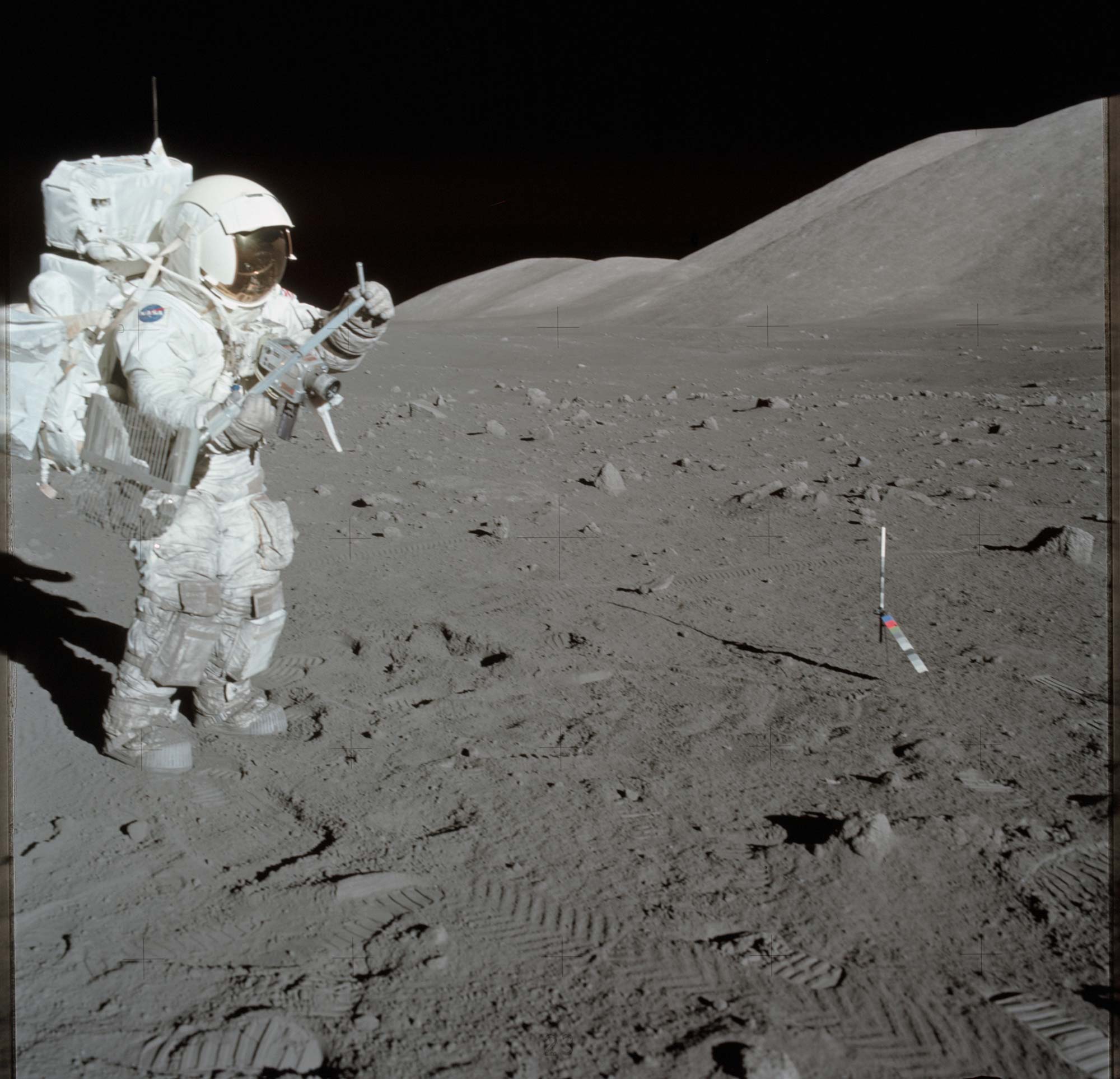NASA Picks 9 Lucky Science Teams to Study Pristine Apollo Moon Rock Samples

Nine lucky science teams have been given the chance of a lifetime: to study moon rock samples collected by the Apollo program that have been sealed for decades.
The teams' investigations will tackle questions touching on geology, space weathering, meteorite impacts and more. The samples were sealed for future study, when researchers could use more-advanced equipment than was available in 1972, the year the final Apollo mission returned.
"We have three lunar samples that have come back from the moon that have never been opened," NASA Administrator Jim Bridenstine said during a news conference held today (March 11) to mark the release of President Donald Trump's 2020 budget request, or "Moon to Mars" as NASA is calling it. "When the previous generations did Apollo, they knew that the technology that they had in that day was not the technology that we would have in this day."
Related: NASA's Apollo Moon Rocks Still Thrill Scientists 50 Years Later
But NASA has decided that with technological advances and the country's plans to return to the moon, it's time to open up those long-sealed samples. The agency announced its intentions last year.
"We feel like we can do that because there are more lunar samples on the horizon, where we're going to be able to learn more than we've ever learned about the moon before," Bridenstine said. "So, I'd like to thank, if it's OK, the Apollo generation, for preserving these samples so that our generation could have this opportunity."
Now, NASA has announced the teams that will study the samples. Those include groups based at NASA Ames in California and NASA Goddard in Maryland; the Bay Area Environmental Research Institute; the University of Arizona; the University of California, Berkeley; the U.S. Naval Research Laboratory; the University of New Mexico; Mount Holyoke College in Massachusetts; and the Planetary Science Institute.
Get the Space.com Newsletter
Breaking space news, the latest updates on rocket launches, skywatching events and more!
"By studying these precious lunar samples for the first time, a new generation of scientists will help advance our understanding of our lunar neighbor and prepare for the next era of exploration of the moon and beyond," Thomas Zurbuchen, associate administrator for NASA's Science Mission Directorate, said in a statement. "This exploration will bring with it new and unique samples into the best labs right here on Earth."
Before the teams can actually open the samples, they'll need to work with the rocks' NASA caretakers to develop practices to ensure that opening the sealed material doesn't contaminate the rocks.
In addition to the samples themselves, NASA is also providing $8 million in funding to the selected teams.
- Before They Go to Space, Astronauts Go to Geology Camp
- Should We Open Some Sealed Apollo Moon Samples?
- NASA Has Lost Hundreds of Its Moon Rocks, New Report Says
Email Meghan Bartels at mbartels@space.com or follow her @meghanbartels. Follow us on Twitter @Spacedotcom and on Facebook.
Join our Space Forums to keep talking space on the latest missions, night sky and more! And if you have a news tip, correction or comment, let us know at: community@space.com.

Meghan is a senior writer at Space.com and has more than five years' experience as a science journalist based in New York City. She joined Space.com in July 2018, with previous writing published in outlets including Newsweek and Audubon. Meghan earned an MA in science journalism from New York University and a BA in classics from Georgetown University, and in her free time she enjoys reading and visiting museums. Follow her on Twitter at @meghanbartels.









